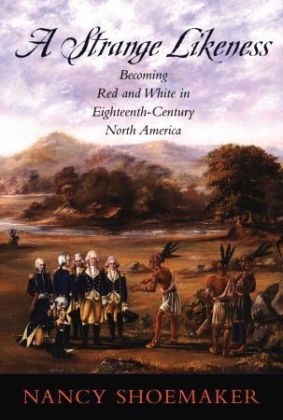Read more
Zusatztext One of the book's strengths is its attentiuon to many Indian peoples, especially those in the American South, who usually attract less notice ... very readable ... a worthwhile book. Informationen zum Autor Nancy Shoemaker is Associate Professor of History at the University of Connecticut- Storrs. She is the author of American Indian Population Recovery in the Twentieth Century and editor of Negotiators of Change: Historical Perspectives on Native American Women, Clearing a Path: Theorizing the Past in Native American Studies, and American Indians. Klappentext The histories told about American Indian and European encounters on the frontiers of North America are usually about cultural conflict. This book takes a different tack by looking at how much Indians and Europeans had in common. In six chapters, this book compares Indian and European ideasabout land, government, recordkeeping, international alliances, gender, and the human body. Focusing on eastern North America in the 18th century, up through the end of the Seven Years War in 1763, each chapter discusses how Indians and Europeans shared some core beliefs and practices.Paradoxically, the more American Indians and Europeans came to know each other, the more they came to see each other as different, so different indeed that they appeared to be each other's opposite. European colonists thought Indians a primitive people, laudable perhaps for their simplicity but notdestined to possess and rule over North America. Simultaneously, Indians came to view Europeans as their antithesis, equally despicable for their insatiable greed and love of money. Thus, even though American Indians and Europeans started the 18th century with ideas in common, they ended thecentury convinced of their intractable differences. The 18th century was a crucial moment in American history, as British colonists and their Anglo-American successors rapidly pushed westward, sometimes making peace and sometimes making war with the powerful Indian nations-the Iroquois and Creekconfederacies, Cherokee nation, and other Native peoples-standing between them and the west. But the 18th century also left an important legacy in the world of ideas, as Indians and Europeans abandoned an initial willingness torecognize in each other a common humanity so as to instead develop newideas rooted in the conviction that, by custom and perhaps even by nature, Native Americans and Europeans were peoples fundamentally at odds. Zusammenfassung Shows that Indians and Europeans shared common beliefs about their most fundamental realities - land as national territory, government, record-keeping, international alliances, gender, and the human body. This work includes incidents, letters, and recorded speeches from the Iroquois and Creek confederacies, the Cherokee Nation, and other sources....

